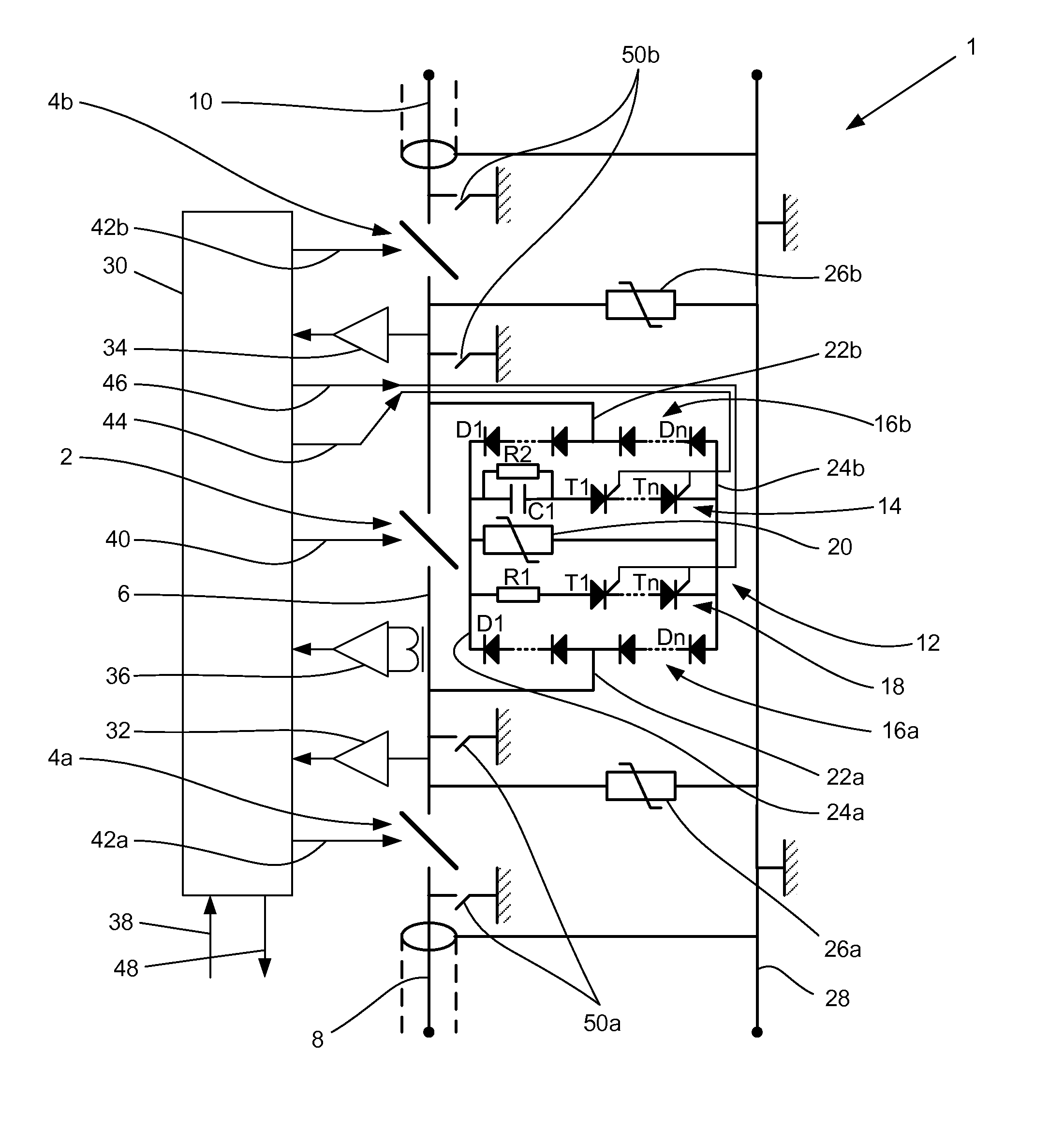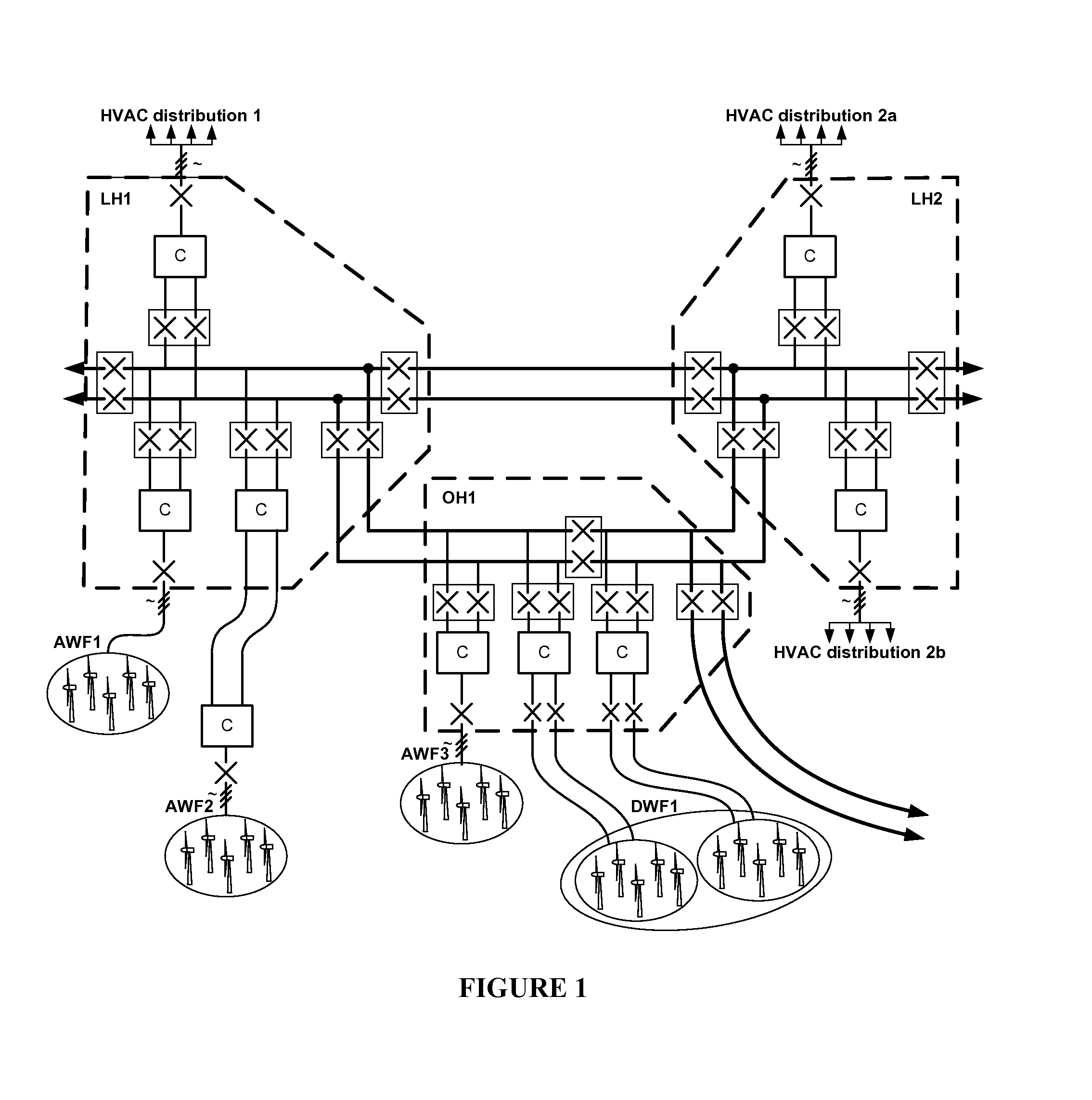Circuit breakers
a circuit breaker and circuit technology, applied in the field of circuit breakers, can solve the problems of affecting the performance of hvdc line insulation, affecting the reliability of hvdc transmission networks, etc., and achieves the effect of enhancing the mechanisms that are inherent, and reducing the risk of arc energy loss
- Summary
- Abstract
- Description
- Claims
- Application Information
AI Technical Summary
Benefits of technology
Problems solved by technology
Method used
Image
Examples
Embodiment Construction
[0059]FIG. 1 shows part of a generic symmetrical bipole, multi-terminal network with meshed, point-to-point and multi-channel transmission line elements. High voltage alternating current (HVAC) circuits are identified by the industry standard symbol / / / denoting three phase circuits, but it will be readily appreciated that any convenient number of phases can be used in practice. High voltage direct current (HVDC) circuits are identified by parallel running pairs of lines. Bold lines indicate meshed heavy current circuits into which lower current circuits are terminated. The meshed heavy current circuits have a plurality of terminals (i.e. connections to the lower current circuits) and so the network defines a multi-terminal network. Such a multi-terminal network might be extensive and so only part is shown in FIG. 1 for the purpose of providing technical background to the present invention. The arrow heads provided on some of the lines indicate that the network can be extended to ot...
PUM
 Login to View More
Login to View More Abstract
Description
Claims
Application Information
 Login to View More
Login to View More - R&D
- Intellectual Property
- Life Sciences
- Materials
- Tech Scout
- Unparalleled Data Quality
- Higher Quality Content
- 60% Fewer Hallucinations
Browse by: Latest US Patents, China's latest patents, Technical Efficacy Thesaurus, Application Domain, Technology Topic, Popular Technical Reports.
© 2025 PatSnap. All rights reserved.Legal|Privacy policy|Modern Slavery Act Transparency Statement|Sitemap|About US| Contact US: help@patsnap.com



